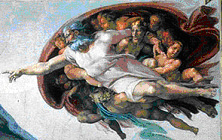Health, Human Health and Mental Health | ||
|
Our health and our environmental health are our most valuable asset. It is often taken for granted until it is lost. Health and disease are concepts that are only relevant to biological systems. Organisms require a balanced ratio of resources for survival. A failure to achieve a resource causes a deficiency, while a surplus of any resource results in toxicity. A primary function of any biological system is an adaptive maintenance of a state of balance between the internal and external environment. In more complex mobile organisms, the nervous system coordinates this function of maintaining balance, even when the internal and external environments are constantly changing. In a state of health there is the pursuit of the beneficial and defenses against harmful aspects of the environment. Every process, including mental processes, correlates with environmental circumstances and simultaneous physiological and biochemical events within the body and the brain. Within the brain, functioning can be conceptualized as the activity of a network of nerve cells, with simultaneous complex biochemical events and gene expression. The nature of this functioning is a result of evolution, development, learning, current perception, and judgment. The capacity to adapt correlates with the mental flexibility to adapt with the specificity that is needed for the current life situation. The greater the flexibility and the specificity of response, the greater the capacity to adapt. As a more complex life forms evolved, equally more complex systems have evolved to maintain balance. However, many of the lower more primitive systems remain. We can compare it to an ancient city where there is new construction built on top of older structures. The newer and older functions are redundant and interconnected with each other. The final result is a hierarchy of more complex adaptive systems existing over the lower more primitive adaptive systems. Human health has been defined as soundness, or balance of the mind, body, spirit and soul. Although we live in a society that values extremes, health is, instead a state of balance (or peace). This goal can be concisely stated as:
Balance: Healthy mental functioning helps achieve this balance. Theories to explain human mental functioning have existed for millennia and knowledge of human anatomy has existed for centuries. However, knowledge of brain physiology has mostly evolved during recent decades. 2500 years ago Plato described a model of human functioning that is surprisingly accurate. It has similarities to both Freudian theory and our current view of brain physiology. He recognizes both the concept of hierarchy as well as the constant struggle to reconcile simultaneous opposing forces within us: “In the case of the human soul, first of all it is a pair of horses that the charioteer dominates; one of them is noble and handsome and of good breeding, while the other is the very opposite, so that our charioteer necessarily has a difficult and troublesome task.” Michelangelo demonstrates a remarkable insight into the anatomy of the human brain in The Creation of Adam (see addendum):
It has long been questioned whether the human mind is able to understand itself. The brain is clearly the most complex organ. Until recently, most of the brain was considered a mysterious black box, since we could not visualize the anatomy and physiology of the living brain. With new technology, we can now better understand the functioning of the brain. It is a very complex organ consisting of 100 billion nerve cells of thousands of different types, which communicate with over 100 different transmitters with a much greater number of different receptor sites at 100 trillion synapses. The functioning of the brain is regulated by approximately 40,000 genes, which are expressed to different extents depending upon the current life situation. Mental health needs to be defined in the context of the current external and internal environmental situation. In a state of mental health, mental functioning facilitates, rather than impedes healthy adaptation. These concepts can be incorporated with a systems approach to define mental health as: Behavior, cognition, emotions, vegetative functioning, neuronal architecture, neural chemistry and gene expression reflect the life situation and maintain balance, by facilitating an adaptive allocation of resources, resulting in the capacity to experience pleasure, well being, fulfilling relationships and productive activities; the mental flexibility to adapt to change and the ability to recognize and contend appropriately with adversity. As a result of new discoveries in the field of mental health, the social and environmental sciences, there is a rapid explosion of advances on the fields related to the understanding of mental functioning. Subsequently, we are flooded with information that is difficult to organize. To acquire a truly valid theory of human functioning, we need to first define health by integrating information into the hierarchy of the many systems that effect and are affected by human mental processes. Refer to the sections that describe each of these systems: |
